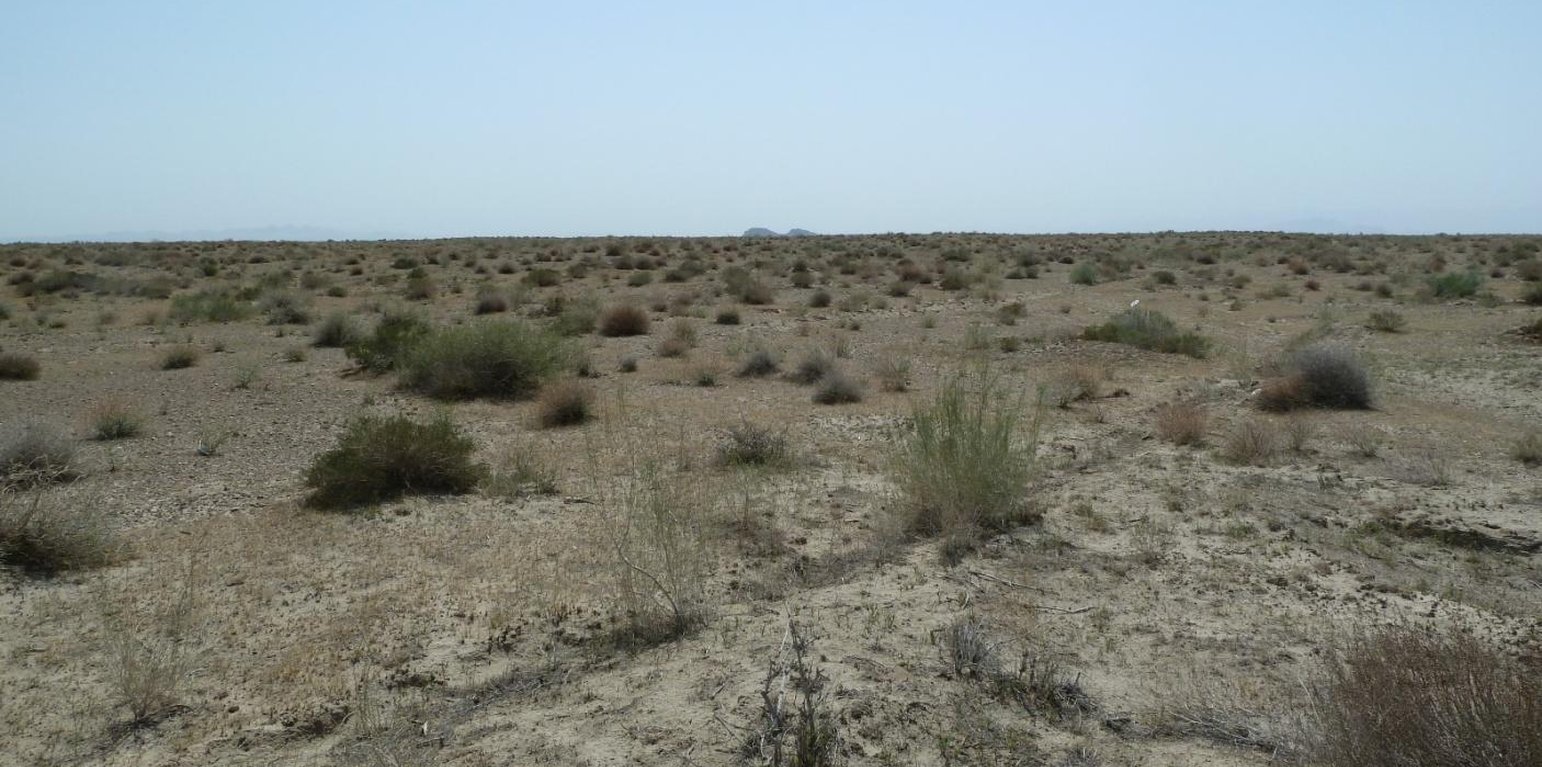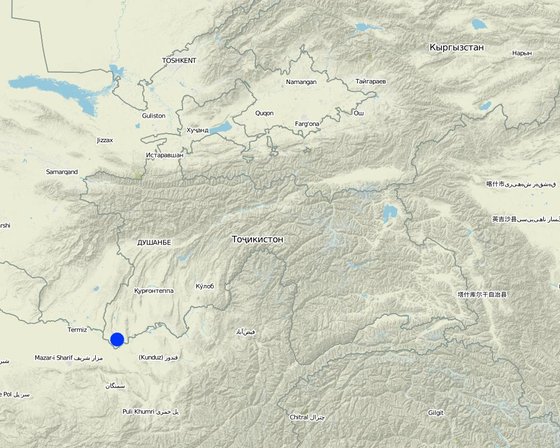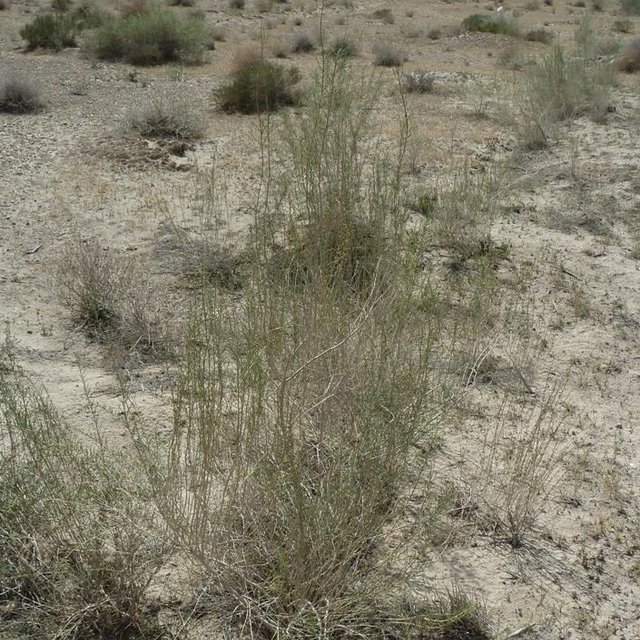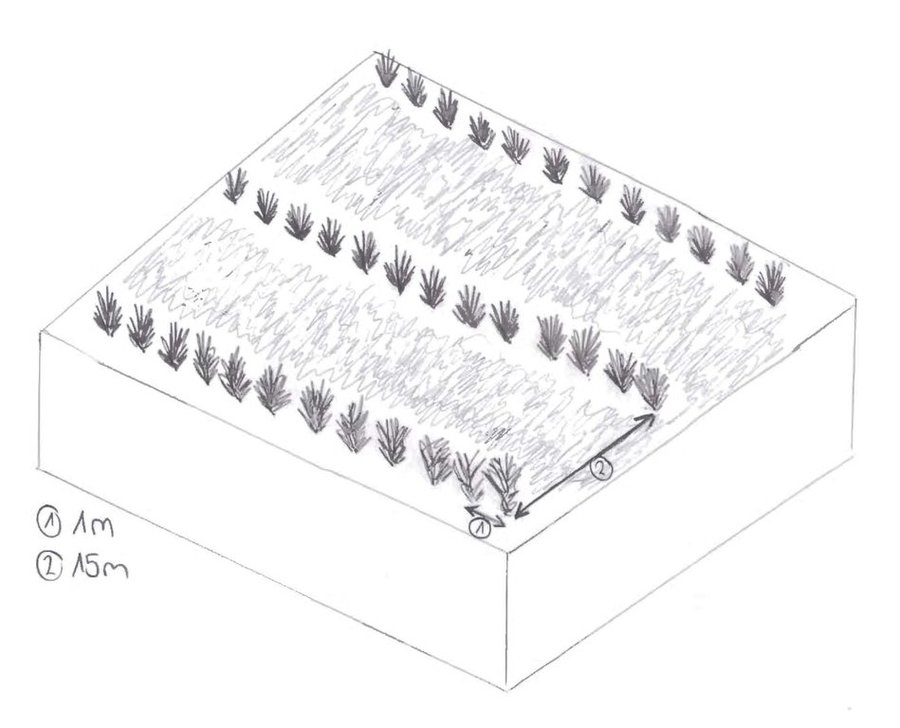



On 15 ha of denuded land, prone to wind erosion the Saxaul bush (Haloxylon ammodendron) which is native to Central Asia was planted in order to stabilise the soils and halt desertification. Over two years 25 ha of Saxaul plantation was established through natural spreading of the plant. The idea came from UNDP who also funded the purchase of seeds, fuel and fertilisers. UNDP further conducted an awareness raising campaign among local land users and members of dekhkan farms about the role of Saxaul bushes in combating land degradation and techniques of planting Saxaul plantations.
Purpose of the Technology: The Shaartuz area has repeatedly suffered from droughts, and the natural vegetation cover is highly degraded due to overexploitation for firewood. This renders the sandy soils very susceptible to wind erosion. Saxaul plantations have been widely applied in other arid areas of Central Asia to combat desertification, and were selected as an appropriate method for soil fixation around Shaartuz.
Establishment / maintenance activities and inputs: Saxaul seeds have to be collected in November, and need to be planted immediately, as otherwise they lose their viability. A tractor was used to plough the land, and the seeds were planted manually. 15 ha of plantation were planted in one single day. As they are not irrigated in this area, the Saxaul bushes are entirely dependent on winter rain and dew for their water supply. The trees grow slowly and need protection from roaming cattle. As the forestry department (leskhoz) responsible for the protection of the plantation has no guards, the project employed a local forester from the Jamoat to protect the area. Meetings were held with surrounding villages to discuss the risk of wind erosion, and the need for the plantations. Also a mobile theatre was involved in order to raise the public awareness with regards to deforestation and desertification issues. An agreement was achieved with the local residents to help protect the newly planted trees from cattle.
Natural / human environment: Saxaul plantations improve vegetation cover, and therefore also increase water infiltration into the soil and improve soil structure. Once the soil has stabilised with the help of the Saxaul bushes, other herbs and bushes will regenerate in the area, and reinforce the vegetation cover. Moreover, different wild animals and birds are already nesting in the area as the vegetation increases.

Location: Jura Nazarov Jamoat, Shaartuz, Khatlon, Tajikistan
No. of Technology sites analysed:
Spread of the Technology:
Date of implementation: less than 10 years ago (recently)
Type of introduction






| Specify input | Unit | Quantity | Costs per Unit (Somoni) | Total costs per input (Somoni) | % of costs borne by land users |
| Labour | |||||
| Collect Saxaul seeds | Persons/day | 16.0 | 20.0 | 320.0 | 100.0 |
| Equipment | |||||
| Tractor for seed planting | Persons/day | 1.0 | 100.0 | 100.0 | 100.0 |
| Fuel | ha | 15.0 | 6.666666 | 100.0 | |
| Plant material | |||||
| Seeds | kg | 13.0 | 15.0 | 195.0 | |
| Fertilizers and biocides | |||||
| Fertilizer | kg | 3.3 | 2.42424242 | 8.0 | |
| Total costs for establishment of the Technology | 723.0 | ||||
| Specify input | Unit | Quantity | Costs per Unit (Somoni) | Total costs per input (Somoni) | % of costs borne by land users |
| Labour | |||||
| Protection of plantation from cattle | ha/month | 15.0 | 16.666667 | 250.0 | |
| Total costs for maintenance of the Technology | 250.0 | ||||
Loss of grazing land due to restricted access, however, land was already degraded.
Fertilisers are needed during the establishment phase
A guard is needed to protect the plantation all day long from roaming cattle.
provides a habitat for a bird species that are dependent on the tree (Passer ammodendri)